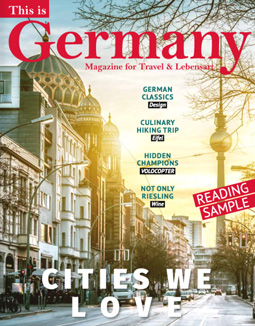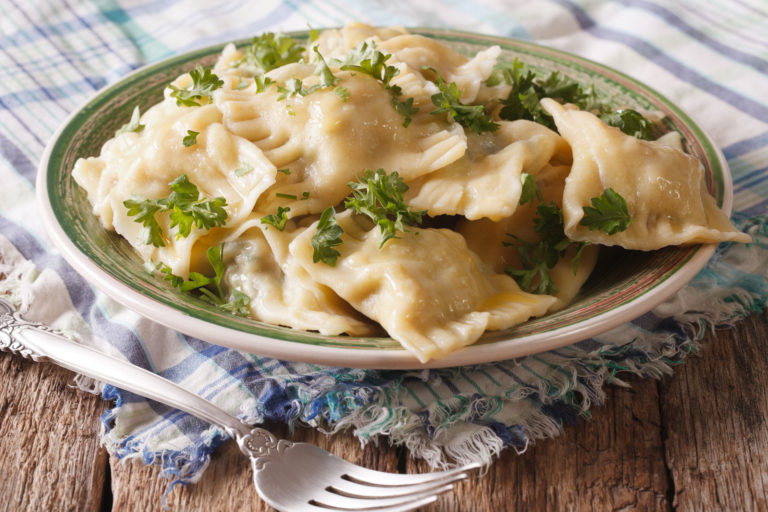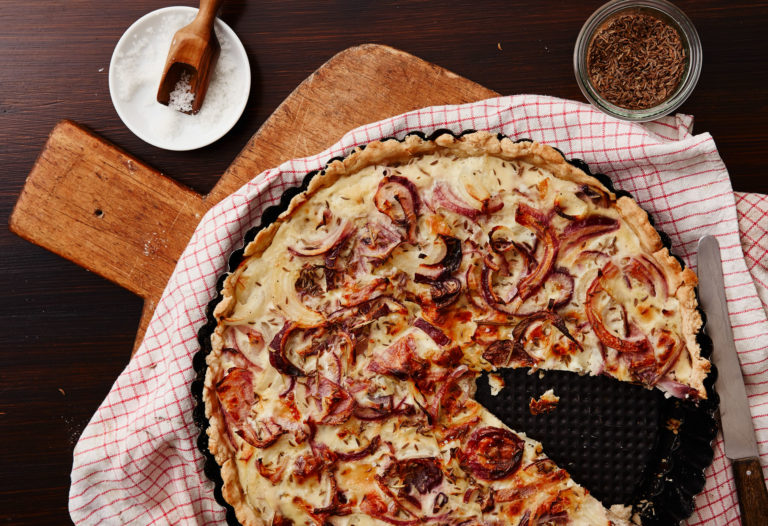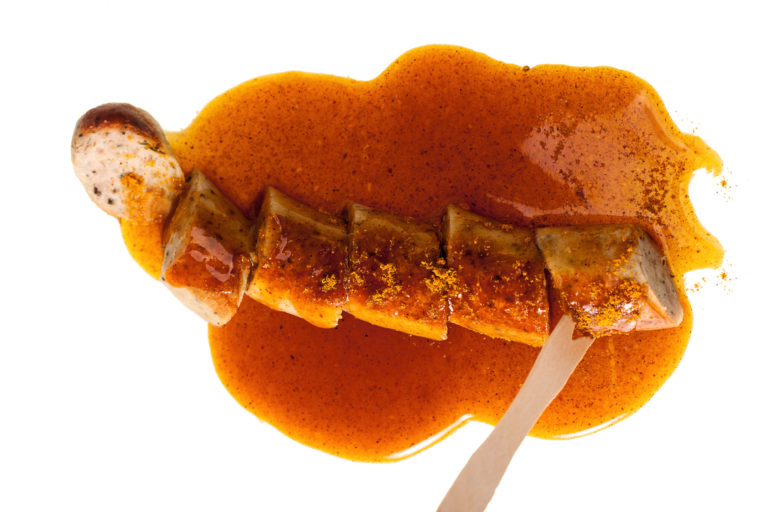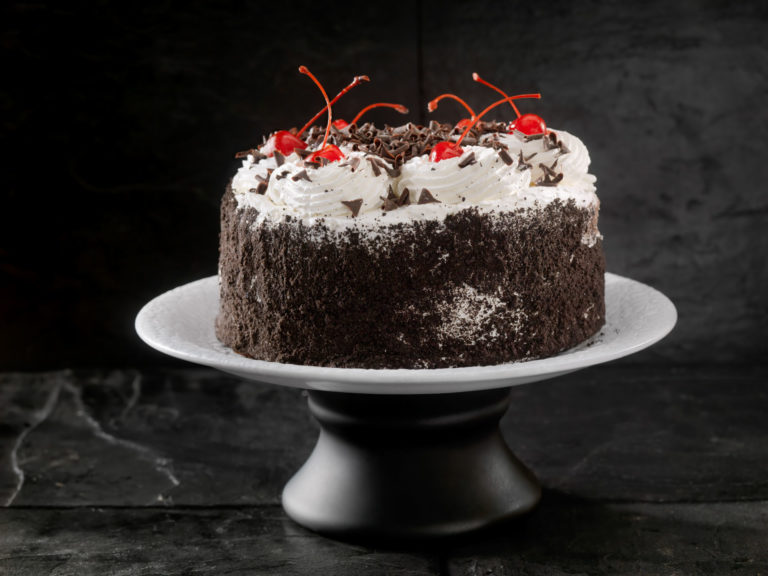10 Classic German Dishes
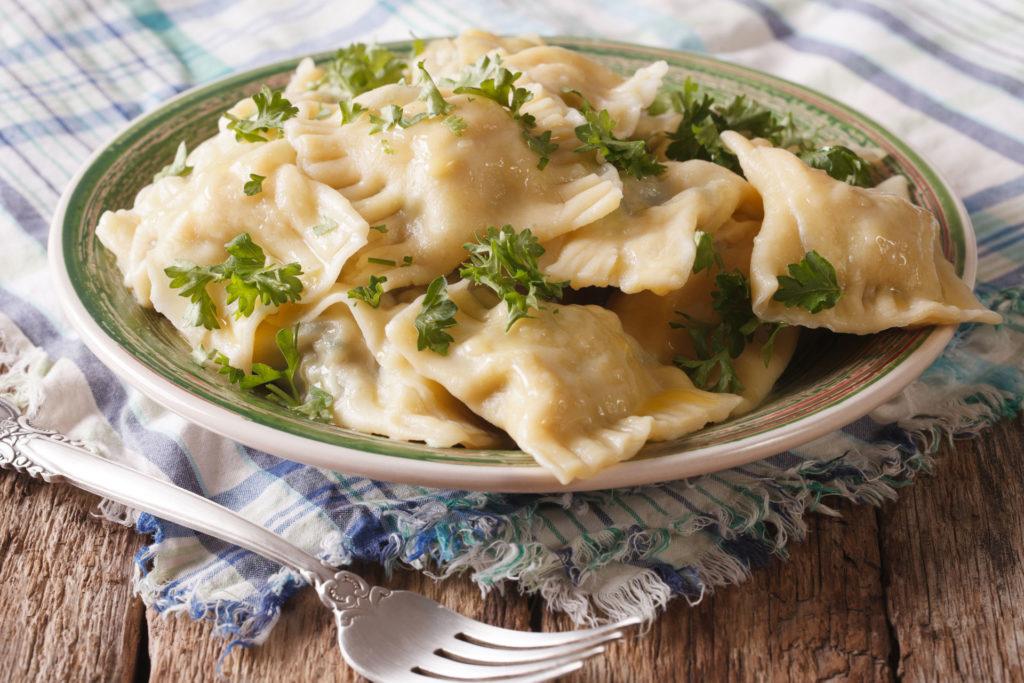
Hugely popular not only in the South of Germany: Maultaschen.
Traditional German cuisine is known around the world for being hearty and often meat-heavy, comfort food, in other words. While dining in Germany these days is often a much more diverse and lighter experience, with plenty of international, vegetarian and vegan options to choose from, the list below caters to the more classic side of the German palate with dishes that have been served in the country for decades, if not centuries. By Paul Sullivan
Maultaschen
This hugely popular dish, which since 2009 been recognized as part of the cultural heritage of Baden-Württemberg, hails from the southwestern region of Swabia, and allegedly originated with naughty Cistercan monks at Maulbronn monastery who attempted to smuggle (forbidden) meat into their food during Lent. Similar to ravioli pasta, these ‘pockets’ are traditionally served in square or rectangular shapes, and filled with a mix of minced meat, sauerkraut, egg, onion and spinach, and flavoured with various herbs and spices. They can be served sliced, in a broth as a soup, or just smothered in a sauce of butter and onion.
Flammkuchen
This thin, crispy pizza-like dish comes from the Alsace region and is popular in France—where it’s known as tarte flambée — as well as Germany. Its interesting name comes from its original incarnation as an oven-heat tester — a thin slice of dough was placed into ovens to see if they were warm enough to bake the real bread. Nowadays the dough is still rolled out thinly, usually in a rectangle or oval shape, then covered with fromage blanc or crème fraîche, caramelised onions and lardons. It’s then baked in a wood-fire oven until the crust pops and blisters; it’s not uncommon to find sweet variations too, sometimes made with apples.
Roulade
Another German treat with a French name (Roulade comes from the French verb ‘to roll’, ‘rouler’), Rouladen are long, thin, tender strips of meat, usually beef or veal but sometimes chicken, that are covered in mustard and traditionally filled with bacon, onions, and pickles, though other fillings can be used. The whole bundle is then rolled up, browned in a pan and simmered slowly in a rich gravy. Popular throughout Europe, they’re actually known as Paupiettes in France, and Involtini in Italy), but in Germany they’re traditionally served with Rotkohl (pickled red cabbage) and either potatoes (boiled or mashed) or dumplings, as well as Spätzle (see above).
Spätzle
Also from Swabia, but today found at restaurants all over the country and beyond, these delicious egg noodles are made from just three key ingredients: eggs, flour, and either milk or water. Their slightly chewy texture is more reminiscent of dumplings than pasta, and they’re usually used as a perfectly sticky base for sauces and gravies, served as a side to meat dishes, added to soups—or mixed with grated cheese and fried onions to make Käsespätzle, a beloved dish in its own right, especially in Swabia, Bavaria and the Allgäu region.
Himmel un ääd
The unusual name of this dish is Köln (Cologne) dialect for “Himmel und Erde”, or in English “Heaven and Earth”, which refers to the ingredients: apples (from the trees, or heaven), mashed potatoes (from the earth), plus black pudding and fried onions. It has been around since the 18th century. As well as Cologne, where it’s often served up in breweries and beer halls as well as restaurants, you can also find the dish throughout the Rhineland, Westphalia and Lower Saxony.
Fischbrötchen
It might come as a surprise to see something as humble as a fish sandwich here, but this simple delight can be transformative in the right hands. It’s especially ubiquitous in northern Germany, where access to the North and Baltic seas along the coast guarantees a certain freshness. The actual fish used ranges from Bismarck herring to sprats, mackerel, salmon or even crab in some places. As well as the freshness, taste elevation comes with the toppings and condiments—onions, pickles, remoulade and other sauces — as well as a suitably soft but crispy bun. One of the classic German on-the-go snacks.
Schweinsbraten
This roasted pork dish — which can also be found in countries like Poland and the Czech Republic — is generally associated with Bavaria, and is often found in the region’s beer halls, especially during Oktoberfest. Consisting of fatty pork shoulder roasted slowly in a rich sauce (often dark beer) and peppered with delicious herbs like cloves, caraway and cumin, it’s often then sliced and served with traditional sides like braised cabbage (sauerkraut) and potato dumplings… and traditionally washed down with a tasty Pilsner.
Königsberger Klopse
This dish gets its name from the fact it was invented in the East Prussian capital city of Königsberg, which is today Kaliningrad. Essentially meatballs made from veal (or beef) in a creamy sauce, its subtly complex taste is due to a mix of onion, eggs, pepper, anchovies and other spices that are kneaded into the meatballs, as well as an accompanying sauce made with capers and lemon juice. Normally served with boiled potatoes, this dish is especially popular in Berlin and Brandenburg.
Currywurst
Although it’s a major street-food staple in many cities (especially Berlin, Cologne and the Rhine-Ruhr region), currywurst only came into existence in 1949 when — legend has it — Berlin resident Herta Heuwer obtained ketchup and curry powder from British soldiers and mixed them together to form a sauce, which she then poured over grilled and chopped pork sausage. As strangely exotic as this mix might sound, around 800 million currywurst are consumed each year, often accompanied with fries (pommes) or a simple bread roll.
Schwarzwälder Kirschtorte (Blackforest Gateau)
We couldn’t compile a list of German food without including cake. The most famous, of course, is Black Forest Gateau, known locally as Schwarzwälder Kirschtorte, although the name comes from the region’s speciality liquor rather than the actual Black Forest itself. Indeed the liquor in question, Schwarzwälder kirsch, distilled from tart cherries, has to be included by German law for the cake to qualify as Schwarzwälder Kirschtorte. It’s blended with layers of chocolate sponge cake and whipped cream, and decorated with maraschino cherries and chocolate sprinkles to create what many consider a heavenly combination.
Photos: iStock
